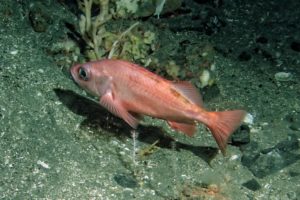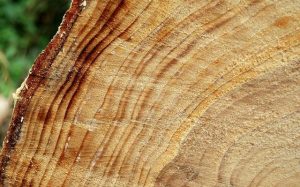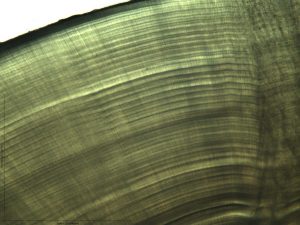Ecology is one of the natural sciences, and for many people, that means that ecologists are left-brain dominated folks. We use the scientific method, apply ecological theory, and work to understand patterns in the natural world. What people don’t always see is that ecology requires an enormous amount of creativity. In fact, this is one of the things that draws many of us to the field.
 As fishery ecologists begin to think more about our changing climate, creativity is essential. One of the major goals in the field is to understand how our fish stocks will respond to future ocean conditions. Often the best place to start is looking at how fish stocks responded to climate shifts in the past. Easy, right?
As fishery ecologists begin to think more about our changing climate, creativity is essential. One of the major goals in the field is to understand how our fish stocks will respond to future ocean conditions. Often the best place to start is looking at how fish stocks responded to climate shifts in the past. Easy, right?
Fish stock responses in the Past + Climate predictions for the Future = Predicted fish stocks in the Future
But wait. Where do we look to understand how fish responded to climate shifts in the past? NOAA wasn’t around 100 years ago monitoring fish stocks and measuring oceanographic information. And though we have anecdotal evidence from fisheries, this isn’t always sufficient to truly know what a fish stock was doing.
[Enter creative problem solving.]
Tree ring scientists have been hind-casting climate (predicting what climate was doing in the past) using tree rings for a very long time. The basic method is simple.
- Core tree to expose tree rings
- Count the tree rings (assigning the latest ring to the current year) and assign a year of formation to each ring
- Measure the width of each ring assuming that a wider ring means that the tree grew more in that year
- Based on an understanding of the factors that make trees grow faster (i.e. rain, certain temperature ranges), use tree ring widths to predict rainfall and temperatures in the past.
But, what does this have to do with fisheries and fish responses to climate change? Take a look at the photos below. The first is the rings of a hardwood tree, the second, analogous rings in the ear bone of a fish! Fish produce rings – very similar to tree rings – in their otoliths (ear bones) as they grow. Borrowing methods from tree ring science, we can use the width of these rings to make predictions about ocean conditions in the year that each ring was formed.
 .
. 
My collaborators and I used this method in a new paper out in Climate Research about Pacific Ocean Perch (Sebastes alutus) and past climate conditions in the Bering Sea. Since Pacific Ocean Perch can live to ~100 years old we were able to make climate predictions (using otolith ring width data) back to 1919! The chronology shows that shifts in the Pacific Decadal Oscillation (a shift from relatively warm to relatively cool Pacific Ocean temperatures) have critical and long-lasting impacts on the growth of this rockfish. Read the paper here for more detailed results:
http://www.int-res.com/abstracts/cr/v71/n1/
One of my favorite things about working with this group of collaborators has been the strong focus on making this work available and applicable to management of Pacific Ocean Perch, a high volume and economically important fishery in Alaska. Two authors on the paper are staff at the Alaska Fisheries Science Center, tasked with managing the fishery. This collaboration ensured that our work was relevant and that it is now in the hands of those making decisions for the sustainability of this culturally and economically important fish stock.
Photo credits: Live fish in ROV image: Washington Department of Fish and Wildlife; Pacific Ocean Perch haul: Alaska Fisheries Science Center.